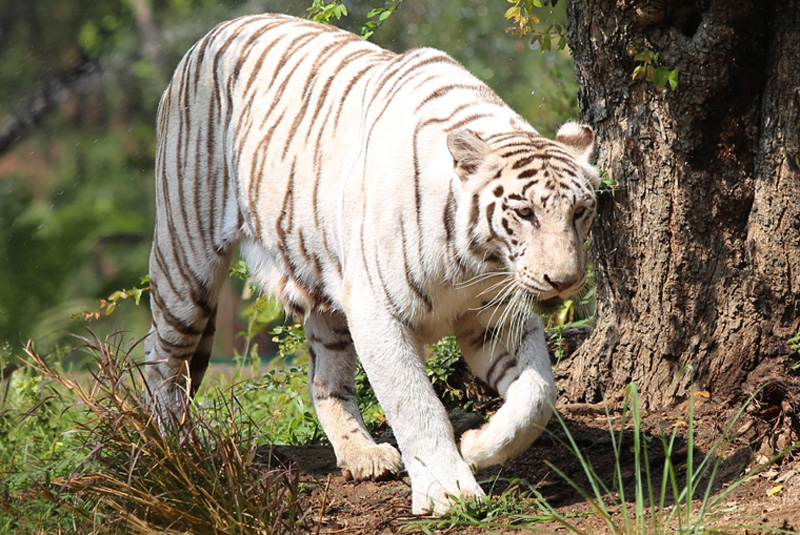Nieves: that’s the name of the white Bengal Tiger born in a Nicaraguan zoo. The female cub, first to be born in the Central American Nation, is being raised by the wife of the zoo director as the mother, a yellow and black Bengal tiger which was rescued from a circus, could not produce milk to feed Nieves.
As is well-known, the white tiger is a rare occurrence; as some call it “a freak of nature.” The white colouring is the result of a single recessive gene called SLC45A2. Nieves’ mother, Dalila, inherited the gene from her father who was a white tiger.
White tigers are exclusively found in captive breeding programmes, where they are interbred to maintain the distinctive fur colour. Consequently, a number of white tigers found in zoos have health issues such as weak eyesight and deformities.
In the sixteenth-century, white tigers were found in the wild, particularly in the forests of India. However, their numbers dramatically declined due to uncontrolled trophy hunting, habitat loss and habitat fragmentation. The fact that many white tigers captured or shot in the wild were mature adults suggests that a white tiger is able to survive in the wild. But unfortunately, they are no longer found in the wild.
-30-
Copyright©Madras Courier, All Rights Reserved. You may share using our article tools. Please don't cut articles from madrascourier.com and redistribute by email, post to the web, mobile phone or social media.Please send in your feed back and comments to editor@madrascourier.com











